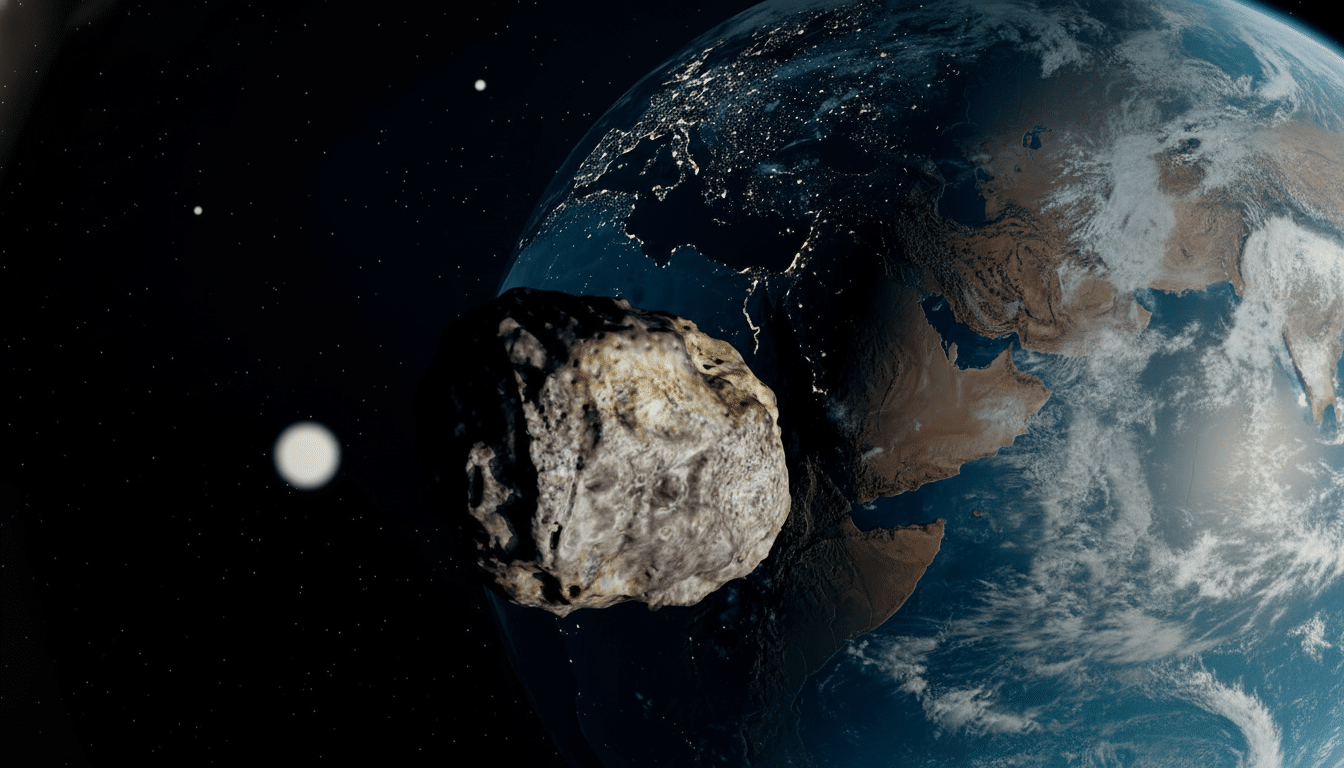A small near-Earth asteroid may be a natural satellite of Earth for a short time before it is flung back into orbit around the Sun in the first half of the 2040s, according to scientists who discovered and tracked it. The object, known as 2022 RD2, is one of a rare class of sluggish-moving “Arjuna” asteroids and is currently on NASA’s risk list, with current estimates finding extremely little chance of an impact but incredibly muddled orbital behavior that requires monitoring.
A languid Arjuna asteroid drifting within Earth’s orbit
Arjunas circle the Sun on orbits that closely follow Earth’s, catching up at modest speeds. And it’s that lethargic pace which makes them so dynamic. Traveling at speeds much slower than the average near-Earth asteroid flyby, Earth’s gravity can have an outsize effect, occasionally snaring these rocks for months as “mini moons.” Only a few have been verified, including 2006 RH120 and 2020 CD3, so each candidate is scientifically valuable.

2022 RD2 was found in 2022 and shares the characteristic properties of this group.
Its close approach near a slow relative velocity provides more realistic opportunities for temporary capture than is the case for faster-moving and more eccentric NEAs. The possible window of capture is one of the reasons RD2 is interesting both for science and for modeling planetary defense.
From quasi-moon behavior to a captured minimoon phase
Not every Earth-trailing object turns out to be a natural satellite. “Quasi-moons” follow orbits of the Sun that are synchronized with Earth’s, seeming to circle around us as we peer back at them but never falling into a gravitational embrace. In contrast, minimoons have a temporary orbit around Earth before escaping back into solar orbit after at least one revolution around it.
The capture phase is expected to last a few months, according to the simulation conducted by a team from the Universidad Complutense de Madrid. Maior’s calculations put 2022 RD2 within reach of Earth between 2043 and 2044.
Their analysis, described in a paper published Tuesday in Research Notes of the American Astronomical Society, assumes standard conditions for temporary satellite capture: a close approach, an abrupt change in relative speed, and a period where Earth’s gravity is dominant.
Chaotic orbital evolution and long-term impact chances
What makes RD2 a particularly slippery one is the speed with which it can turn the future into a sphere of total unpredictability. The Madrid team estimates a Lyapunov time of less than 20 years — a sign that small forces and the gravitational tugs of nearby planets can dramatically shift its path over human timescales. After a possible minimoon phase, some computed orbits diverge toward impact solutions beginning in the 2080s.

More conservative estimates come from NASA’s Center for Near-Earth Object Studies. Its Sentry risk monitoring dates for potential impact are likely later, members of the team said, and its current probability is less than 0.1%. Anyway, the asteroid is small; it would probably be tens of meters across, about the size of a multi-story building (my essay link above explains how big I think), so an impact would be regional. It’s no global threat. Options can go either way, CNEOS notes; previously calculated probabilities even change after new observations fine-tune the orbit.
Astrometry and radar follow-up are crucial. Accurate tracking in upcoming apparitions, particularly with planetary radar at NASA’s Goldstone facility, can further trim down the uncertainty cloud, refine predictions, and in some cases eliminate impacts altogether. The loss of Arecibo will make this work even more challenging, highlighting the importance of an expanded radar capability as well as a resilient optical survey.
Why temporary minimoon captures matter to researchers
Temporary satellites have some strange scientific perks. And because they move slowly and approach slowly, they are well suited for quick-reaction missions to test guidance, sampling, and resource extraction techniques. Some of the Arjunas may even contain material that bears compositional resemblance to debris on the Moon, providing insights into recent impacts there as well as dynamics in Earth’s vicinity.
There’s a practical angle too. Low approach speeds result in lower mission Δv, making these targets interesting for small satellites. Recent achievements such as OSIRIS-REx’s sample return and the DART kinetic impact demonstration that changed a sub-kilometer moonlet’s orbit by 33 minutes demonstrate that close-up small-body missions are not merely feasible, but can be game-changers for planetary defense. A minimoon like 2022 RD2 could be a valuable proving ground.
What to watch next as scientists track asteroid 2022 RD2
The immediate thing to do is try to get more data. Coordinated global campaigns by the NEO community, as well as campaigns led by NASA’s Planetary Defense Coordination Office and ESA’s NEO Coordination Centre, will attempt to refine RD2’s orbit solution, challenge the temporary-capture scenario, and stress-test risk models. Discovery and tracking of faint, slow movers such as RD2 is expected to be enhanced by the Rubin Observatory’s Legacy Survey of Space and Time, which should exceed today’s short visibility windows.
Not every slow one has proved to be natural — some are spent rocket boosters — but scientists said 2022 RD2’s behavior suggested an authentic asteroid.
The public takeaway is clear: there’s nothing to worry about, but this really is the kind of thing that merits ongoing watchfulness. If projections hold, 2022 RD2 will offer Earth a temporary new moon — and a priceless checkup for how we find, follow, and, if ever needed, deflect the rocks that drift too near.

